1.What Are High Bay Lights?
LED high bay lights are lighting fixtures that use Light Emitting Diodes (LEDs) as the primary light source. They are designed to provide bright and efficient illumination in spaces with high ceilings, typically ranging from 15 to 50 feet (4.5 to 15 meters) or more. LED high bay lights are commonly used in commercial and industrial settings where large areas need to be well-lit, such as warehouses, manufacturing facilities, gymnasiums, hangars, and retail spaces.
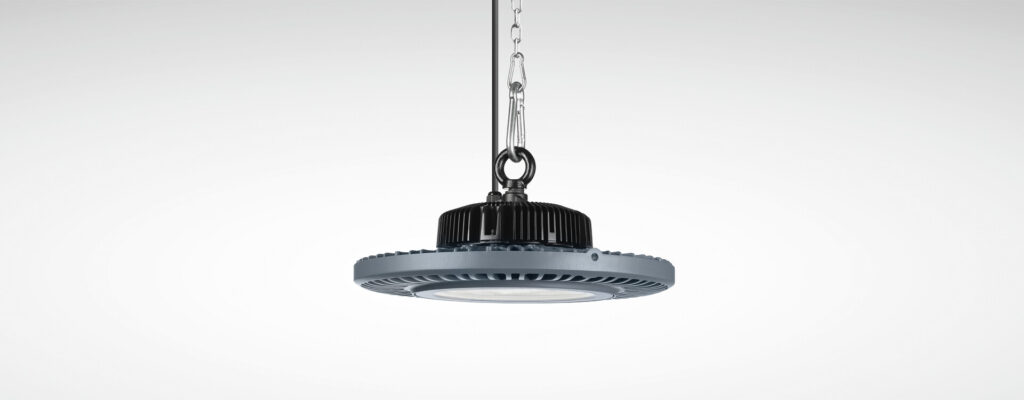
The application of LED high bay lights is to ensure adequate lighting in areas with high ceilings, where traditional lighting solutions like fluorescent or metal halide fixtures may not be as effective or energy-efficient.

2.What Is The Advantage For LED High Bay Lights?
LED high bay lights offer several advantages over traditional lighting options. Here are some key advantages:
Energy Efficiency: LED high bay lights are highly energy-efficient, consuming significantly less electricity compared to traditional lighting fixtures. This leads to lower energy costs and reduced environmental impact.
Long Lifespan: LED technology has a longer operational life compared to traditional lighting sources. LED high bay lights can last up to 50,000 to 100,000 hours or more, reducing the frequency of bulb replacements and maintenance costs.
Bright and Uniform Illumination: LED high bay lights provide bright and uniform lighting, ensuring consistent illumination across the entire area. This improves visibility, enhances safety, and creates a more productive working environment.
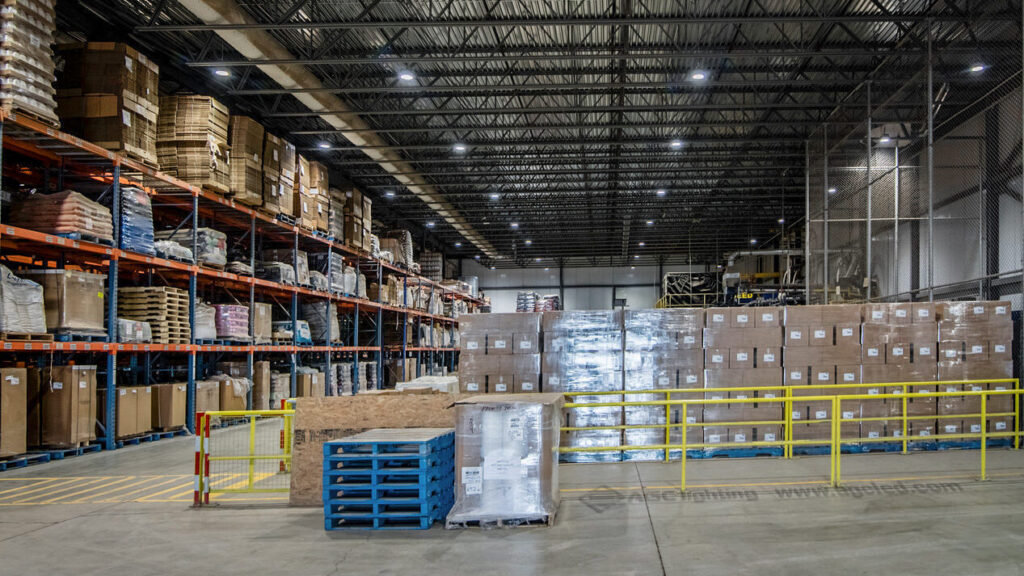
Instantaneous Lighting: LEDs reach full brightness instantly when switched on, eliminating any warm-up time. This is particularly beneficial in spaces where immediate illumination is required, such as warehouses or production floors.
Durability and Resistance: LED high bay lights are durable and resistant to shock, vibrations, and temperature variations. They are designed to withstand harsh industrial environments, making them more reliable and long-lasting.
Flexibility in Design: LED technology allows for flexible design options, including different shapes, sizes, and beam angles. This enables better customization to meet specific lighting requirements and architectural constraints.
Improved Color Rendering: LED high bay lights have better color rendering properties compared to traditional lighting. They can produce a more natural and vibrant light, allowing for better visibility and accurate color representation.
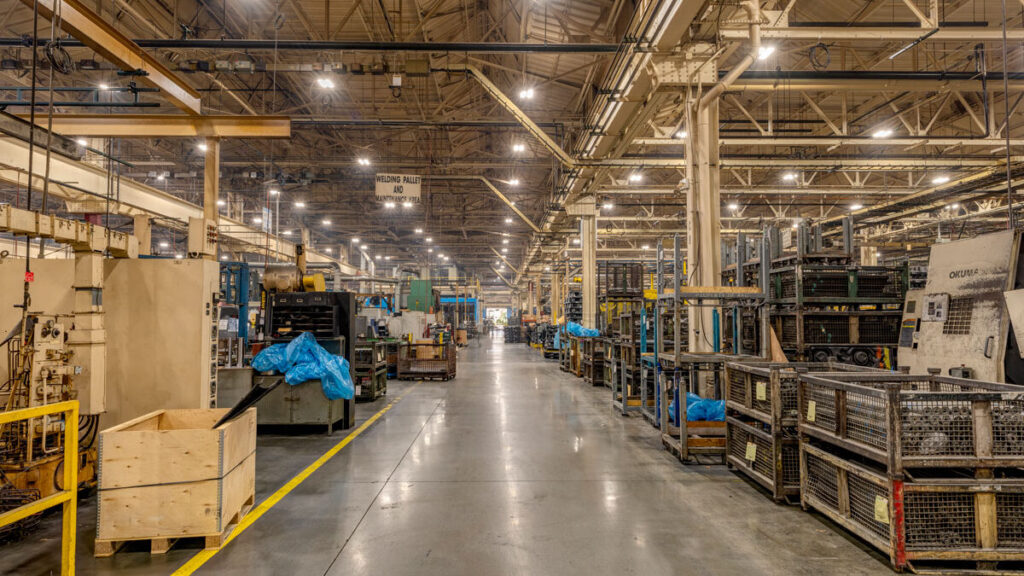
Dimming and Control Options: LED high bay lights can be easily dimmed or controlled, providing the ability to adjust brightness levels based on specific needs. This allows for energy savings and customization of lighting levels as per the requirements of different tasks or areas.
Reduced Maintenance Costs: With their long lifespan and durability, LED high bay lights require less frequent replacement and maintenance, resulting in lower maintenance costs and minimal disruptions to operations.
Environmental Benefits: LED technology is more environmentally friendly compared to traditional lighting sources. LED high bay lights are free of harmful substances like mercury and emit lower levels of greenhouse gases, contributing to a greener and more sustainable lighting solution.
3.How To Choose Proper LED High Bay Lights For Your Project?
When choosing the proper LED high bay lights for your project, consider the following aspects: LED high bay light types, wattage, spacing, and lighting distribution.
3.1 LED High Bay Light Types:
UFO High Bay Lights: These lights provide a 360-degree beam angle, ensuring uniform lighting in all directions. They are suitable for large open spaces or areas where omnidirectional lighting is desired.
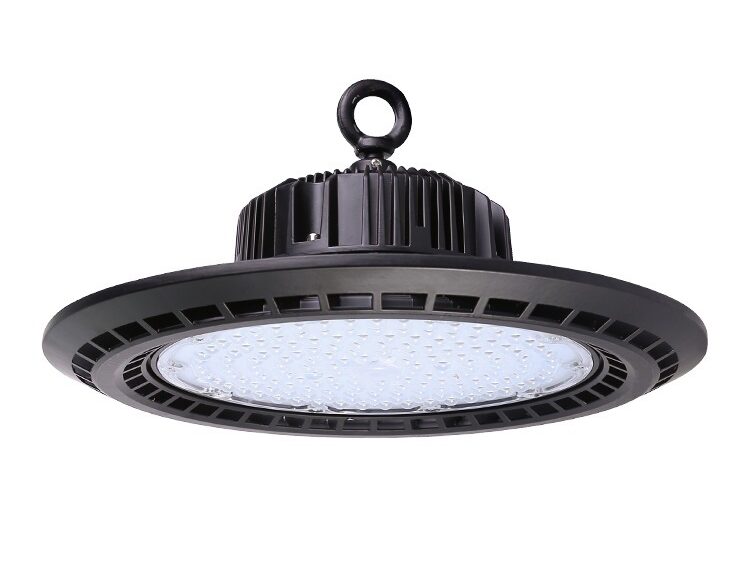
Linear High Bay Lights: These lights have a narrower beam angle, making them ideal for illuminating aisles, shelves, or long corridors with focused lighting.
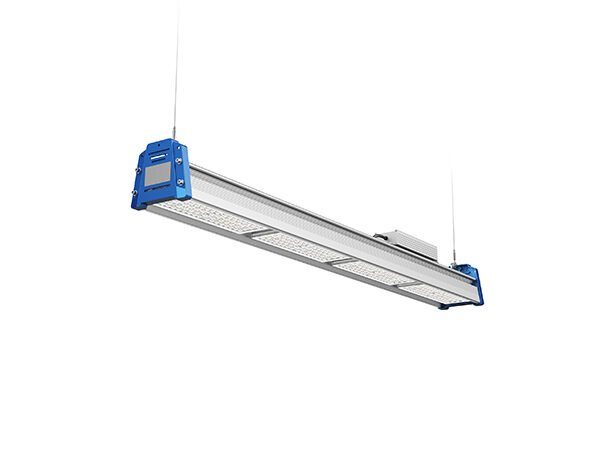
Traditional High Bay Lights: These lights are designed to retrofit existing high bay fixtures, providing a direct replacement option with improved energy efficiency and performance.

3.2 Wattage:
The wattage required for high bay lights depends on the installation height of the fixtures. Here are some general guidelines to help you determine the appropriate wattages based on installation heights:
Low Installation Height (10-20 feet or 3-6 meters):
For low installation heights, you can typically choose LED high bay lights with lower wattages, such as 50W to 100W. These wattages are suitable for illuminating smaller spaces or areas with lower ceiling heights.
Medium Installation Height (20-30 feet or 6-9 meters):
For medium installation heights, consider LED high bay lights with wattages ranging from 100W to 200W. These wattages provide sufficient illumination for spaces with moderate ceiling heights.
High Installation Height (30-50 feet or 9-15 meters):
For high installation heights, you will generally need higher wattages to ensure proper lighting levels. Consider LED high bay lights with wattages ranging from 200W to 400W or more. These higher wattages are designed to provide bright and uniform illumination in spaces with tall ceilings.
It’s important to note that these are general recommendations, and the specific wattage requirements may vary based on factors such as the desired lighting levels, light distribution patterns, space layout, and specific application needs. It’s advisable to consult lighting professionals or manufacturers who can perform detailed lighting calculations based on your specific project requirements. They can provide more accurate wattage recommendations to ensure optimal lighting performance for your high bay lights based on the installation height of your space.
3.3 Spacing:
The spacing between high bay lights can vary depending on factors such as the type of high bay light, the desired lighting levels, the light distribution pattern, and the specific application requirements. However, here are some general guidelines for regular spacing between high bay lights:
Symmetrical Distribution:
For high bay lights with symmetrical distribution, a common spacing guideline is to maintain a distance of approximately 1.5 to 2 times the mounting height between each fixture. For example, if the mounting height is 20 feet (6 meters), the spacing between fixtures would be approximately 30 to 40 feet (9 to 12 meters).
Asymmetrical Distribution:
High bay lights with asymmetrical distribution typically have a narrower beam angle, focusing more light in one direction. The spacing between fixtures may depend on the specific application or the layout of the space. In general, aim for spacing that ensures adequate lighting coverage and uniformity for the targeted area.
It is important to consider the lighting design, the desired lighting levels, and any specific regulations or standards applicable to your project. Consulting lighting professionals, lighting designers, or manufacturers can provide more accurate recommendations based on your specific requirements and help ensure the spacing between high bay lights is optimized for your particular application.
3.4 Lighting Distribution:
Consider the layout and function of the space when selecting the lighting distribution pattern:
Wide Light Distribution: Provides even lighting in all directions. Suitable for open areas with uniform lighting requirements.

Narrow Light Distribution: Focuses more light in one direction. Ideal for lighting aisles, shelves, or specific work areas where directional lighting is needed.


Batwing Distribution: Provides a wider spread of light in one direction. Suitable for rectangular or elongated spaces that require even lighting coverage along the length of the area.

Ensure that the chosen LED high bay lights have the appropriate lighting distribution pattern to meet the specific lighting needs of your project.

Additionally, consider factors such as the quality and reliability of the LED high bay lights, the color temperature (e.g., warm white, cool white), the color rendering index (CRI) for accurate color representation, and any additional features or certifications (e.g., dimmability, IP rating for moisture resistance) that may be required for your project.
It’s advisable to consult lighting professionals, manufacturers, or suppliers who can provide detailed recommendations based on your project specifications, ensuring you select the most suitable LED high bay lights for your specific needs.
4.High BAY Light Projects For Your Reference

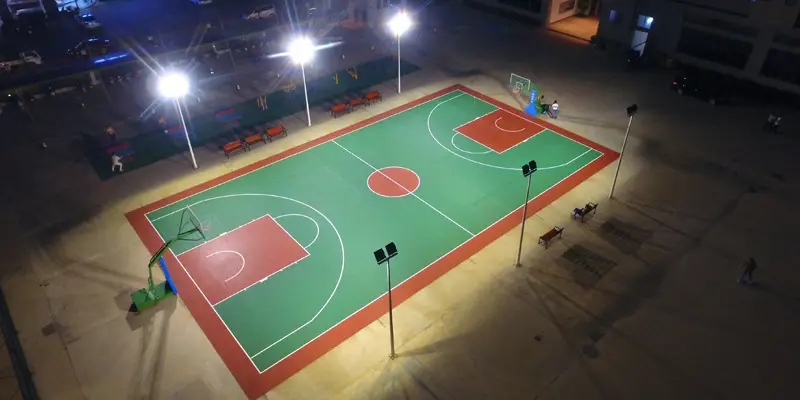
5.Conclusion
Title: The Importance of Choosing the Right LED High Bay Lights
In today’s fast-paced world, lighting plays a crucial role in enhancing productivity, ensuring safety, and optimizing energy efficiency in commercial and industrial spaces. LED high bay lights have emerged as a popular lighting solution for areas with high ceilings, such as warehouses, factories, and gymnasiums. However, the importance of choosing the right LED high bay lights cannot be overstated. This article explores why selecting the appropriate lighting solution is essential for achieving optimal results.
